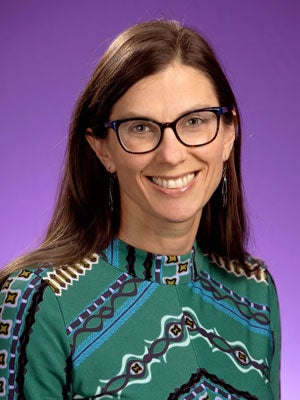Beth Thompson

Research Interests
The Thompson lab is interested in understanding the genetic mechanisms that control inflorescence (tassel and ear) architecture and floral development in the key crop plant, maize (corn). The inflorescences are essential for reproduction and inflorescence architecture in the ear determines the number and position of seeds that will form. We study mutants to identify genes required for these processes and then use a variety of approaches to understand how these genes function during normal development. We currently have two major research projects in the lab to 1) analyze the role of microRNAs in inflorescence development and 2) investigate how MADS-box transcription factors and other genes regulate floral development.
microRNA control of maize inflorescence development
microRNAs (miRNAs) are small, non-coding RNAs that post-transcriptionally regulate gene expression in both plants and animals. We have identified a maize mutant, fuzzy tassel (fzt), that contains a mutation in dicer-like1 (dcl1). DCL1 is an enzyme required to make most miRNAs, and fzt mutant phenotypes are likely due reduced miRNA levels. fzt has both striking inflorescence and vegetative phenotypes, implicating miRNAs in a wide variety of developmental processes. We are using a combination of genomic, molecular and genetic approaches to identify specific miRNAs and miRNA target pairs that are misregulated in fzt and control specific stages of inflorescence development.
This project is funded by an NSF CAREER grant.
Genetic control of maize floral development
Floral development has been extensively studied in Arabidopsis, however much less is known about floral development in maize and the grasses. We study known mutants and floral regulators to understand how floral development is regulated in maize. We are particularly interested in how BEARDED-EAR and other MADS-box transcription factors control maize floral development. To identify new genes that function in maize floral development, we are screening for new floral mutants and then mapping these mutants in the lab.
I am always looking for motivated Ph.D., masters, and undergraduate students to join the lab and contribute to these projects. Please contact me if you are interested in joining us!